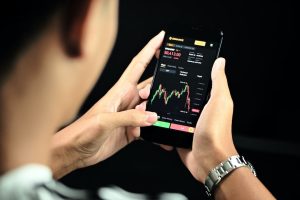Forex or foreign exchange is the decentralized market where currencies are traded globally. It is the largest and most liquid market in the world, with an estimated daily turnover of $5.3 trillion. Forex trading involves buying and selling currencies with the aim of making a profit. The value of each currency is determined by various factors, and forex traders follow these factors to make informed trading decisions.
Economic Indicators and News
Economic indicators and news are crucial factors that forex traders follow. Economic indicators are statistical data that reflect the performance of a country’s economy, such as inflation, GDP, employment rate, and interest rates. Forex traders analyze these indicators to determine the strength or weakness of a country’s economy and its currency. For instance, if a country’s inflation rate is high, its currency may lose value as its purchasing power decreases. Conversely, if a country’s GDP is growing, its currency may appreciate as it signals a strong economy.
Similarly, forex traders follow news and events that affect the global economy and individual currencies. Political instability, trade wars, natural disasters, and pandemics are some of the events that can affect the forex market. For example, if a country’s political situation is unstable, its currency may lose value as investors become hesitant to invest in that country. Conversely, if a country’s government announces a new economic policy that is favorable to its economy, its currency may appreciate.
Technical Analysis
Forex traders also follow technical analysis to make trading decisions. Technical analysis involves analyzing price charts and using various tools and indicators to identify trends and patterns in the market. The aim of technical analysis is to predict future price movements based on past price movements.
Forex traders use various tools and indicators in technical analysis, such as moving averages, Bollinger bands, Fibonacci retracements, and trend lines. These tools help traders identify support and resistance levels, trend direction, and potential entry and exit points. For example, a trader may use a moving average to identify the trend direction and use a Bollinger band to identify potential entry and exit points.
Market Sentiment
Market sentiment refers to the overall mood or feeling of traders towards a particular currency or the forex market as a whole. Forex traders follow market sentiment to gauge the level of optimism or pessimism among traders towards a particular currency. The sentiment can be bullish or bearish, depending on whether traders are optimistic or pessimistic about the currency’s future performance.
Forex traders use various indicators to measure market sentiment, such as the Commitment of Traders (COT) report, the Fear and Greed Index, and the Volatility Index (VIX). The COT report shows the positions of different types of traders in the market, such as commercial traders and hedge funds. The Fear and Greed Index measures the level of fear or greed in the market, while the VIX measures the level of volatility in the market.
Conclusion
Forex trading involves buying and selling currencies with the aim of making a profit. Forex traders follow various factors to make informed trading decisions, such as economic indicators and news, technical analysis, and market sentiment. By analyzing these factors, traders can identify potential trading opportunities and make profitable trades. However, forex trading is a risky business, and traders should always practice proper risk management and use appropriate trading strategies.





